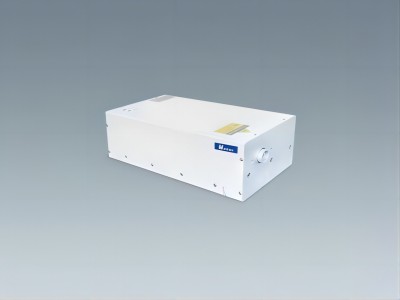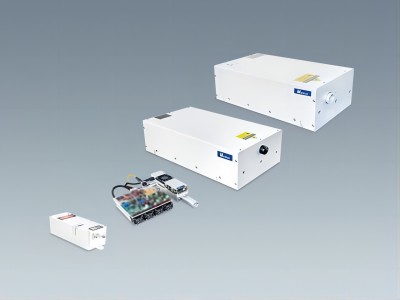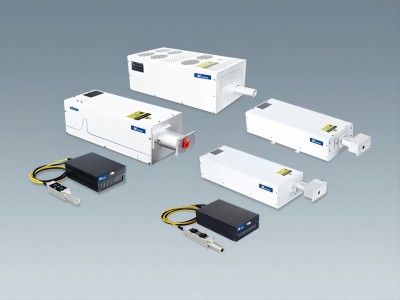Pulse laser technology is revolutionizing peelable fabric substitution
Amidst the surge of technological advancements, pulse laser technology emerges as a brilliant star, profoundly reshaping various industries with its rapid development. From medical to manufacturing, communication to material science, laser technology rapidly reshapes our perception of the future.
Once, peelable fabric was the traditional choice for resolving adhesion and separation issues. However, with the advent of groundbreaking advancements in laser technology, we witness signs of a technological revolution. The application of lasers, leveraging their exact characteristics and unique processing capabilities, is gradually supplanting conventional peelable fabric solutions. Let us embrace the dawn of this new era and explore how pulse laser technology opens up fresh chapters in peelable fabric application.
Microstructure of peelable fabric
Challenges with Peelable Fabric
Peelable fabric finds extensive usage in the production process of fibre-reinforced composite components. While it shields composite surfaces from contamination and damage during transportation and storage, it is also peeled off before bonding composite parts, yielding a clean and rough surface conducive to bonding.
However, despite its convenience, peelable fabric presents issues when exposed to complex environments and demanding conditions. Through in-depth case studies, we delve into the primary problems that peelable fabric may encounter:
Insufficient Adhesion: Peelable fabric may exhibit inadequate adhesion in specific environments like high humidity or elevated temperatures. For instance, in high-temperature working environments, diminished adhesive properties of peelable fabric can impede its ability to maintain requisite adhesion levels, thus affecting productivity and increasing maintenance costs.
Poor Durability: Over prolonged use, peelable fabric may require frequent replacement due to reduced durability caused by stress and wear factors. For example, in aircraft maintenance, peelable fabric used for sealing applications may deteriorate and wear out due to prolonged compression and temperature variations, compromising long-term reliability.
Limitations in Special Environments: Peelable fabric may fail to meet stringent requirements in specialized environments such as the chemical industry and aerospace. For instance, while used for pipeline sealing in chemical plants, peelable fabric may perform inadequately in highly acidic or alkaline environments, posing potential risks to production lines.
Through these analyses, it becomes evident that peelable fabric faces various challenges when subjected to intricate environments and high-demand scenarios, prompting the exploration of more innovative and stable alternatives. Consequently, the application possibilities of pulse laser technology in peelable fabric substitution garner significant attention.
Technical Advantages of Pulse Laser
Laser technology operates on the principle of stimulated emission, generating highly focused laser beams through photon amplification. This principle ensures high energy density and directional light emission. Here are the fundamental principles of laser technology and its notable advantages:
High-Precision Machining Capabilities: Pulse laser technology boasts micron-level accuracy, enabling precise machining of material surfaces. This capability satisfies the demand for high-precision, high-quality products in manufacturing.
Non-Thermal Processing: UV lasers offer non-thermal processing, completing tasks within short durations to minimize thermal impacts on surrounding materials. This feature prevents structural damage resulting from overheating.
Strong Material Adaptability: Laser technology accommodates various materials, including metals, plastics, and ceramics, providing a versatile and efficient processing solution across diverse fields.
Photochemical Reactions: UV lasers can initiate photochemical reactions, inducing chemical changes on carbon fibre surfaces, such as bond breakage or oxidation, altering surface chemical properties.
Clean Peeling: UV laser treatment enables clean surface peeling without chemical strippers, enhancing surface purity and facilitating subsequent coating or bonding operations.
Laser technology’s exact processing capabilities and non-destructive nature have rapidly propelled its prominence in industrial manufacturing and material processing. Its ability to deliver high-precision processing across different materials offers a more advanced alternative to peelable fabric technology.

Tianjin Maiman Lasers in Peelable Fabric Substitution
Tianjin Maiman Laser, committed to innovative laser technology, integrates advanced science with practical applications. Maiman lasers stand out with unique advantages and efficient performance in peelable fabric replacement. Let’s delve into how Maiman lasers lead the forefront of peelable fabric substitution.
The Maiman ELITE series UV lasers boast high energy density, delivering ample energy within short timeframes, and excellent beam quality for precise focusing on small areas.
This capability enables localized treatment of carbon fibre surfaces, adjusting microstructures without significant overall effects and enhancing surface roughness and activity. This improves surface properties and substantially enhances adhesion, making it more suitable for various engineering applications.
For instance, in automotive lightweight applications, precise pulse laser processing enables the accurate cutting of carbon fibre parts and forms micro- and nano-scale structures on surfaces to improve material adhesion. This facilitates broader carbon fibre applications in automotive manufacturing, achieving lightweight body structures and enhanced fuel efficiency.
In electronic device encapsulation, pulse laser processing creates micro-convex structures on encapsulation material surfaces, enhancing adhesion to device surfaces compared to traditional peelable cloth methods. This enhances electronic device performance and long-term stability.
Maiman lasers provide applications for carbon fibre treatment and electronic device encapsulation and offer more efficient and precise solutions across various industries. They are leveraging laser technology’s immense potential and superiority in peelable fabric substitution.
The advantages and development prospects of pulse laser technology in peelable fabric substitution are poised to lead to a new wave of material processing technology. Its innovation, broad applicability, and alignment with environmental and customization needs make it highly adaptable and potentially transformative in the future. Laser technology will continue to drive technological advancements in material processing, offering more efficient and sustainable solutions across industries.






